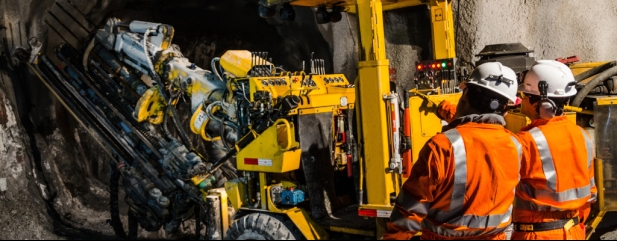Archived article
Please note that tax, investment, pension and ISA rules can change and the information and any views contained in this article may now be inaccurate.
The big value indicator telling you Rio Tinto is a buy

One indicator of value is the dividend yield. A high yield is typically telling you two things – either the market knows a company is struggling and the dividend is under threat, or the share price is too low and the dividend is safe.
We think the latter is the case for FTSE 100 diversified mining group Rio Tinto (RIO) and on that basis we think investors should invest now.
Berenberg has done some number-crunching. The investment bank has identified that, when the dividend yield is above 4.5%, then buying the shares has delivered median returns of nearly 30%. Right now, the forecast yield for 2024 based on consensus forecasts is 6.9%.
Obviously Rio is exposed to volatile commodity prices but it is quite conservatively run so it has a strong balance sheet with a net debt to earnings ratio below 0.2 times, having not made lots of risky acquisitions when metals markets were hot. The company also keeps a tight rein on costs.
Undoubtedly this year has been a disappointment for the miners, largely thanks to China’s failure to recover as expected having lifted zero-Covid restrictions. This explains why Rio is trading on a high yield with its shares down more than 16% year-to-date.
However, Beijing is taking steps to revive the economy and with it, more than likely, demand for global commodities given the world’s second largest economy is a rapacious consumer of them. This could provide a lift to prices.
A third-quarter production update revealed Rio Tinto is performing pretty well as it outlined steps to get back to record production levels of iron ore as soon as 2025. Iron ore, through its complex of mines in Western Australia, and aluminium, are its two big revenue generators but it also produces copper alongside various other metals and minerals.
Berenberg analyst Richard Hatch says: ‘Rio has stable production from its business units, as well as growth from lower-risk expansions/new, lower-cost mines in iron ore and in copper, mostly through the ramp-up of the Oyu Tolgoi mine in Mongolia, in which it owns a 66% stake. We also see cost upside in the Pilbara, based on management targets to pull costs lower in this division long-term.’
Unlike the oil and gas sector, which also looks inexpensive and offers high yields, the mining sector in general, and Rio Tinto specifically, have a key role to play in the energy transition so there are fewer question marks about the sustainability of their business.
Important information:
These articles are provided by Shares magazine which is published by AJ Bell Media, a part of AJ Bell. Shares is not written by AJ Bell.
Shares is provided for your general information and use and is not a personal recommendation to invest. It is not intended to be relied upon by you in making or not making any investment decisions. The investments referred to in these articles will not be suitable for all investors. If in doubt please seek appropriate independent financial advice.
Investors acting on the information in these articles do so at their own risk and AJ Bell Media and its staff do not accept liability for losses suffered by investors as a result of their investment decisions.
Issue contents
Exchange-Traded Funds
Feature
Great Ideas
News
- Tesla investors left sweating over scope for margins recovery
- Netflix ‘turnaround complete’ as cash flow soars in the third quarter
- Big medical breakthrough drives huge gains in Oxford Biodynamics shares
- Why global bond yields continue to shoot up and what it means
- Rightmove shares endure a big hit as US real estate giant CoStar agrees OnTheMarket deal
- Margins may hold the key to PayPal recovery
- Grocery chain Sainsbury’s needs to deliver on earnings and guidance
- ‘Writing on the wall’ for open-ended property funds as M&G closes once popular product
 magazine
magazine








